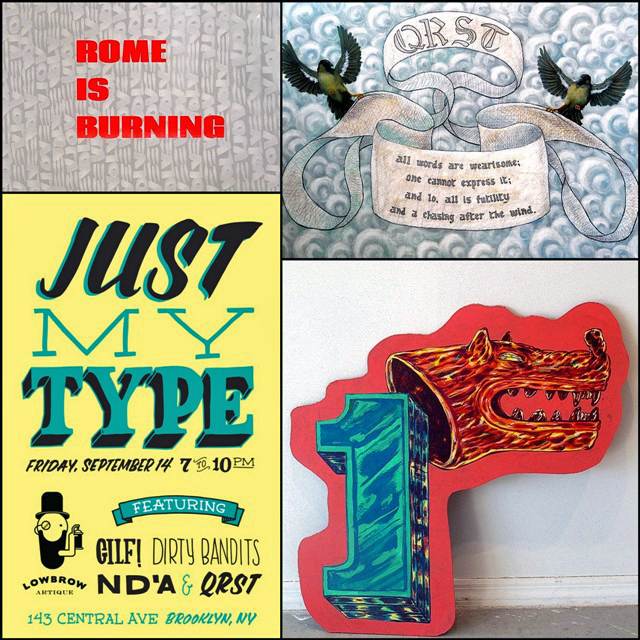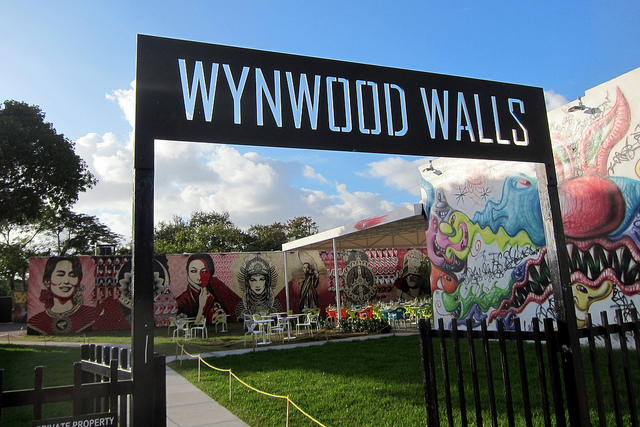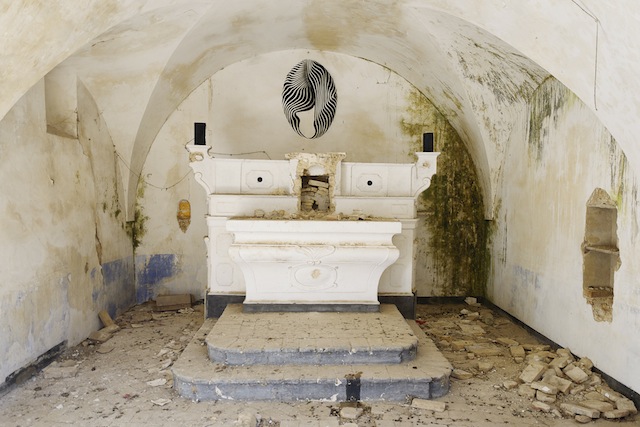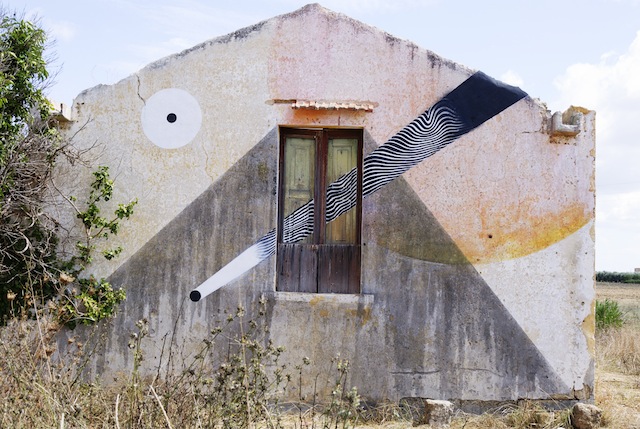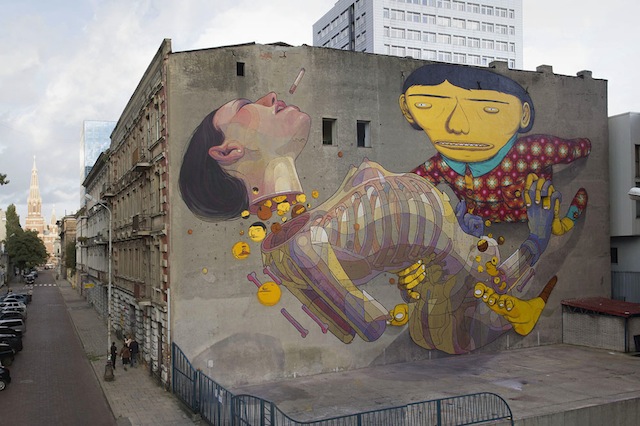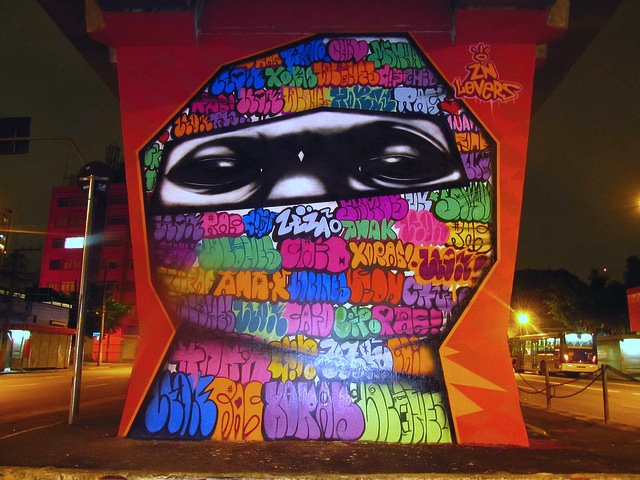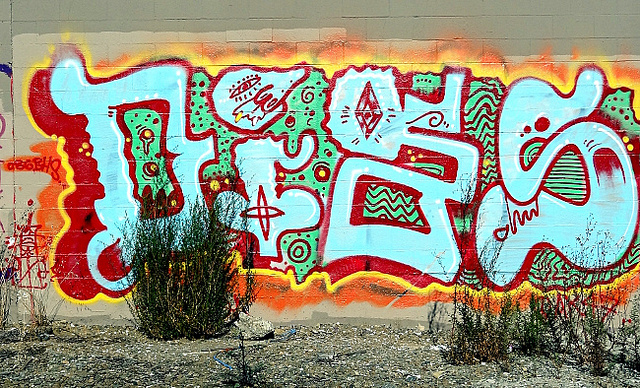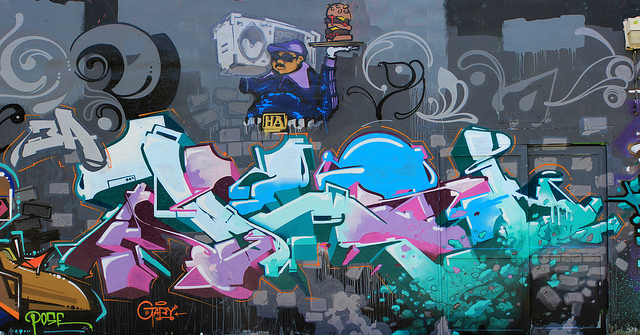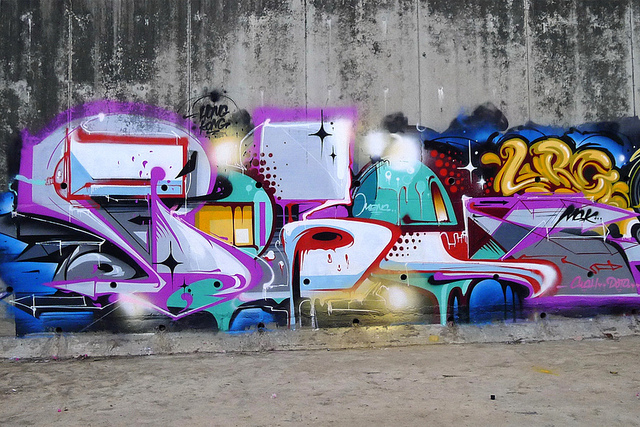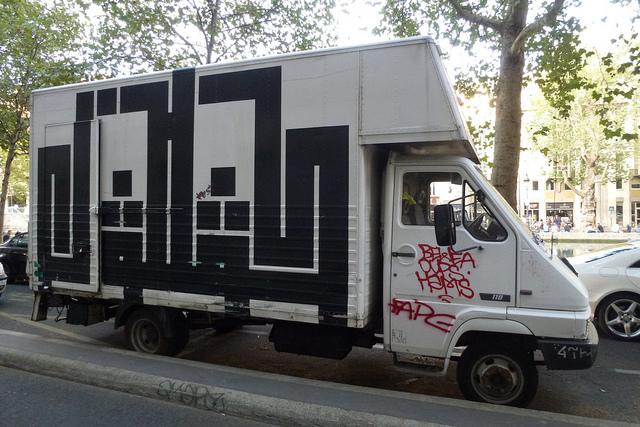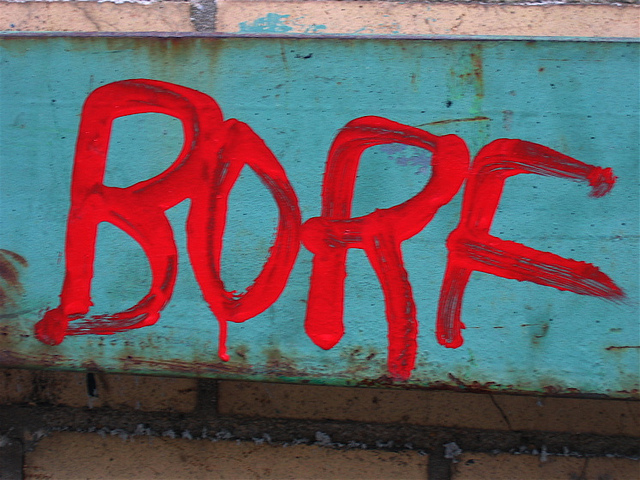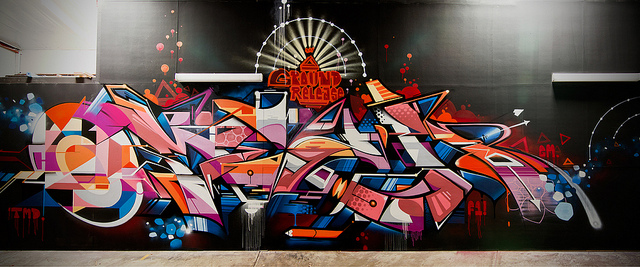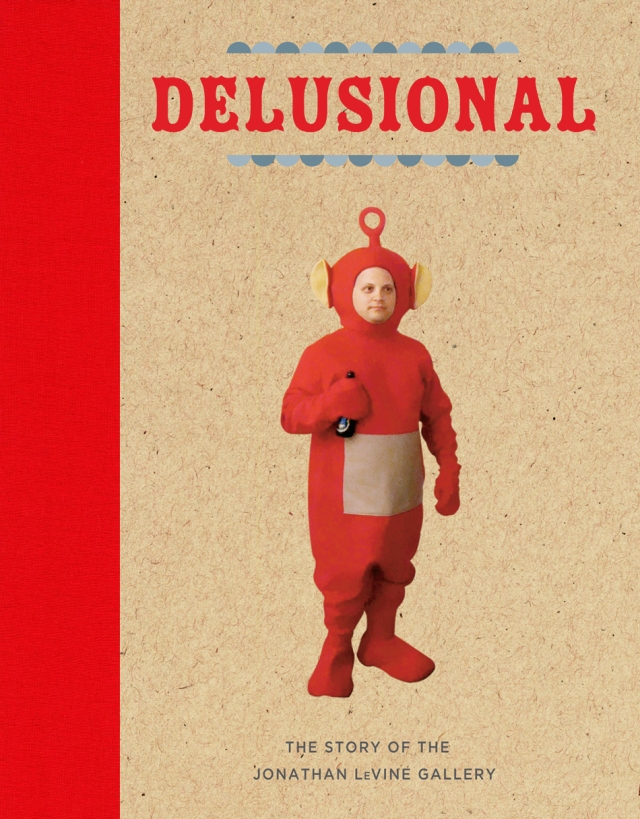
I’d always wondered about Jonathan LeVine, the self-described owner, proprietor, and head honcho of one of my favorite galleries anywhere. Curious about the roots of his passion, vision and success, I recently read Caleb Neelon’s 2011 book, Delusional: The Story of the Jonathan LeVine Gallery. Providing an intimate glimpse into not only the gallery, but into Jonathan LeVine himself, Neelon’s book, brilliantly introduced by Carlo McCormick, also features dozens of wondrous images and reminiscences by a range of artists whose work LeVine has exhibited.
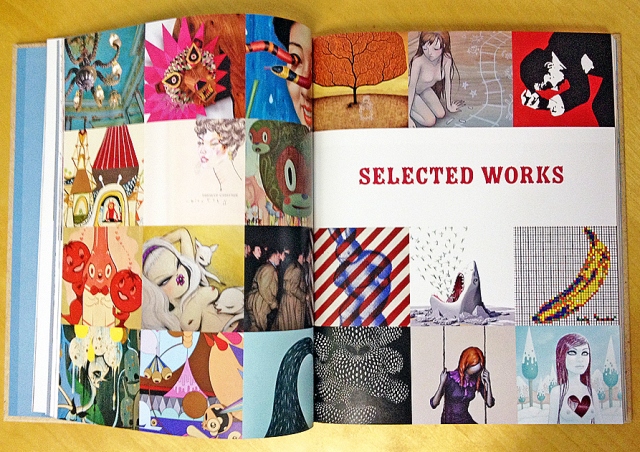
After reading the book, I had the opportunity to meet up with Jonathan and speak with him:
It’s wonderful to have someone with your passion and aesthetic sensibility sharing and promoting the art we love in a gallery in the heart of the art world. What motivated you to bring your vision and business to the Chelsea art district?
I chose New York City because it is the best platform for artists’ works to be seen. It is also the best setting to encourage artists to reach the highest level possible. An artist needs to be seen in a gallery that’s in the epicenter of it all to gain recognition and be taken seriously in the art world. That is the only reason why I’m here. If another city were as important to the success of an artist, I’d be there.
According to Delusional – the Story of the Jonathan LeVine Gallery, you were initially friends with many of the artists whose works you promote in your everyday ventures. You would also just pick up a phone and call anyone whose work spoke to you. Is that still the case? How do you consistently find and feature the work of so many first-rate artists?
It’s mostly the Internet these days. The blogs out there – like Arrested Motion and High Fructose — make it easier for me. But I still check out bookstores. I read magazines, and I speak to people. I also look at art that is referred to me.
How did you manage to establish a collector base strong enough to support your wonderful space?
It’s a slow process. I’ve been at this for 17 years. After curating downtown in the 90’s, I opened a spot in New Hope, PA and then moved to Philly before coming here. I’ve been fortunate to attract such preeminent collectors as Nike CEO Mark Parker who began purchasing artworks from my Philly space and has continued to do so. And I aggressively use the Internet to promote business.
You describe your initial curating ventures as an “addiction” that you couldn’t walk away from. Is that still the case? How do you keep from “burning out?”
Yes, it’s still the case. I see my work as my calling. I couldn’t walk away from it even if I wanted to. I’m married to it and I often tend to take on too much. But to avoid burnout I do take necessary breaks. I travel when I can, and I always try to get sufficient sleep. I also maintain a sense of humor.
Much of the work your gallery features is rooted in pop culture, blurring the lines between pop surrealism, illustration, graphic design and fine arts. Included, too, are works by artists whose main canvas is the streets. Have you any favorite genre? Which artists – in particular – speak to you?
I love them all. I don’t like drawing distinctions among genres. I only feature artwork that I love. I see it all as contemporary art, but for lack of a more distinct term, I came up with the label, “pop pluralism.”
It was your “Streets of São Paulo” exhibit that not only introduced me to your gallery, but moved me to visit São Paulo and explore its streets. How did that come to happen?
I had come across the book Graffiti Brazil by Tristan Manco and Caleb Neelon. I was taken by the raw beauty of the Brazilian street art featured in the book, as it is quite different from what I’d seen elsewhere. I also thought it was important. I decided to visit São Paulo, and that was the first of many trips there and an ongoing relationship with São Paulo’s Choque Cultural Gallery.
What was your most memorable experience since moving your business to NYC?
My visit to São Paulo was my most moving experience, as it was life-changing. A particular moment that stands out here in NYC involves a Shepard Fairey show that I curated back in 2007. Shepard had installed work in a space in DUMBO, Brooklyn for the opening party. I didn’t know what kind of turn-out to expect. I’ll never forget seeing a line that stretched around the block of folks waiting to gain entry to this opening event.
In his intro to Caleb Neelon’s book, Delusional – the Story of the Jonathan LeVine Gallery, the noted art critic Carlo McCormick describes you as both charming and candid! That’s a hard act! How do you manage it — as everyone seems to speak well of you!
That’s good to know! I’m a Northeasterner — honest and straightforward. I suppose that’s how I manage it. I don’t understand greed and selfishness. I have a strong work ethic that is driven by a sound morality. And I don’t compromise.
What is your greatest challenge – as there are certain to be many?
Yes, managing others — getting people to do what I want them to do – is, perhaps, the greatest challenge. And dealing with a range of personalities – involving other people’s issues, along with my own – demands extraordinary skills and patience. Conflict-management is a huge part of my job.
How have other Chelsea art dealers responded to your presence here?
At first, there was a great deal of curiosity. They seemed to be wondering, “Who is this kid?” But their question was answered when they saw me selling art.
How would you define your professional goals?
I would like my gallery to continue to grow and for the art that I exhibit to increasingly gain recognition and respect. I’d like to be a modern version of the late Leo Castelli, the influential New York art dealer who played such a huge role in promoting the works of so many groundbreaking artists.
I meet so many folks in their 20’s who would love to be “the next Jonathan LeVine!” What advice can you offer them?
I don’t think I would recommend this line of work. It is difficult and carries a huge amount of responsibilities and pressures. I would not have chosen to be an art dealer. Folks often make assumptions about me based on my name and the kinds of people who tend to work in this field. But I was raised by a single Italian mother, and we struggled. School was always a challenge, and I disliked it. But when I found my calling, I answered it with passion, perseverance and patience. I view what I am doing as a service to others. I would advise anyone who is interested in this field to acquire basic business — as well as art — knowledge, read extensively and develop a huge network. This is not an easy business! It is demanding and challenging, and it requires tremendous resourcefulness.
What’s ahead?
I’d like the Jonathan LeVine Gallery to become one of New York City’s big blue chip galleries and gain an international presence. I’d also eventually like to have a huge storefront. That would be my next move.
Photos courtesy of the Jonathan LeVine Gallery











